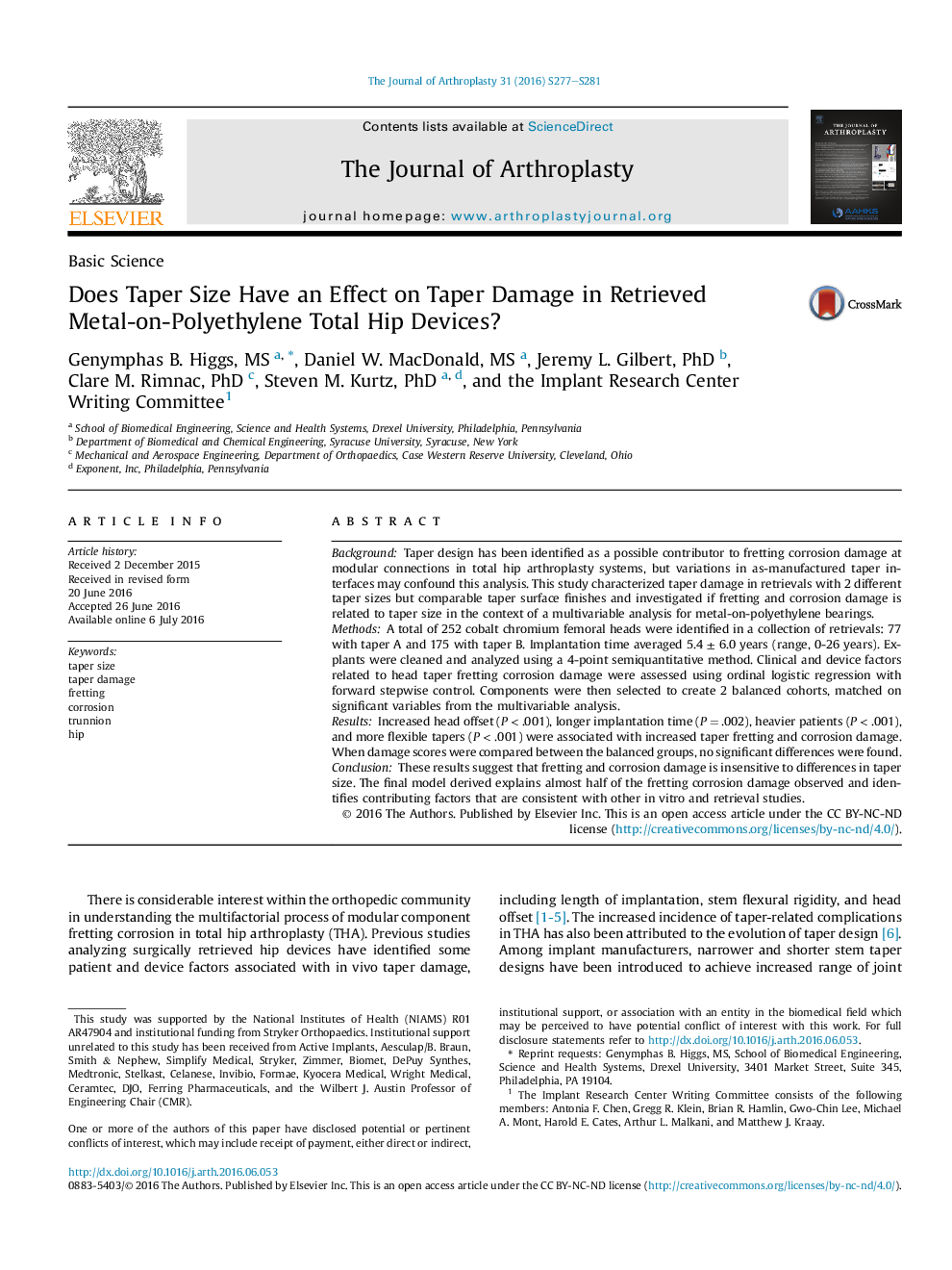| Article ID | Journal | Published Year | Pages | File Type |
|---|---|---|---|---|
| 6208437 | The Journal of Arthroplasty | 2016 | 5 Pages |
BackgroundTaper design has been identified as a possible contributor to fretting corrosion damage at modular connections in total hip arthroplasty systems, but variations in as-manufactured taper interfaces may confound this analysis. This study characterized taper damage in retrievals with 2 different taper sizes but comparable taper surface finishes and investigated if fretting and corrosion damage is related to taper size in the context of a multivariable analysis for metal-on-polyethylene bearings.MethodsA total of 252 cobalt chromium femoral heads were identified in a collection of retrievals: 77 with taper A and 175 with taper B. Implantation time averaged 5.4 ± 6.0 years (range, 0-26 years). Explants were cleaned and analyzed using a 4-point semiquantitative method. Clinical and device factors related to head taper fretting corrosion damage were assessed using ordinal logistic regression with forward stepwise control. Components were then selected to create 2 balanced cohorts, matched on significant variables from the multivariable analysis.ResultsIncreased head offset (P < .001), longer implantation time (P = .002), heavier patients (P < .001), and more flexible tapers (P < .001) were associated with increased taper fretting and corrosion damage. When damage scores were compared between the balanced groups, no significant differences were found.ConclusionThese results suggest that fretting and corrosion damage is insensitive to differences in taper size. The final model derived explains almost half of the fretting corrosion damage observed and identifies contributing factors that are consistent with other in vitro and retrieval studies.
